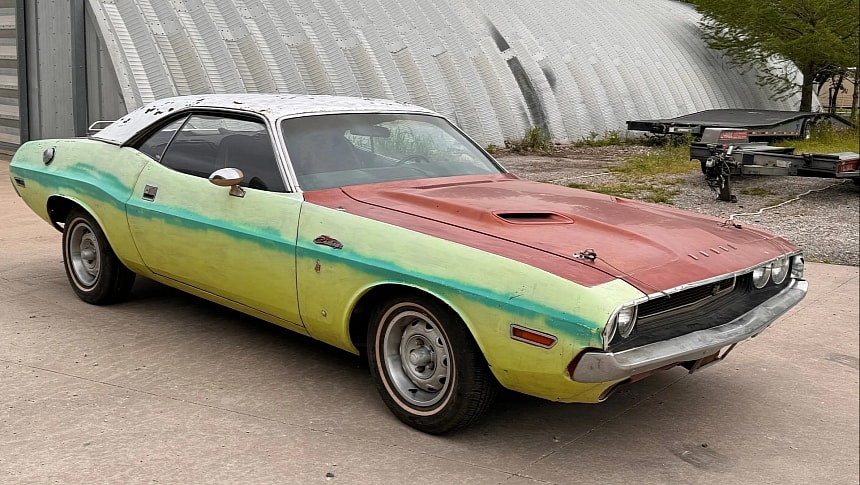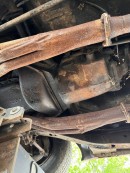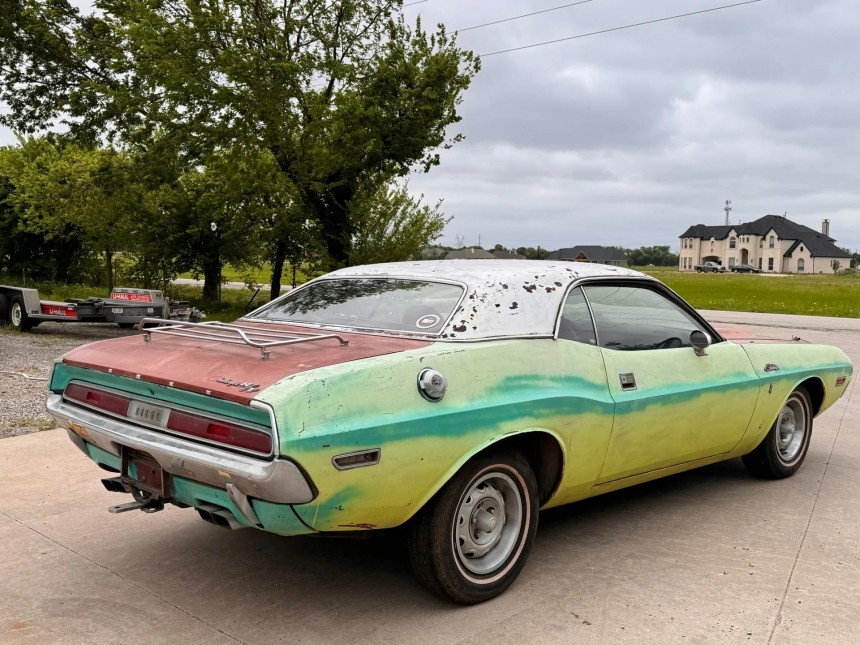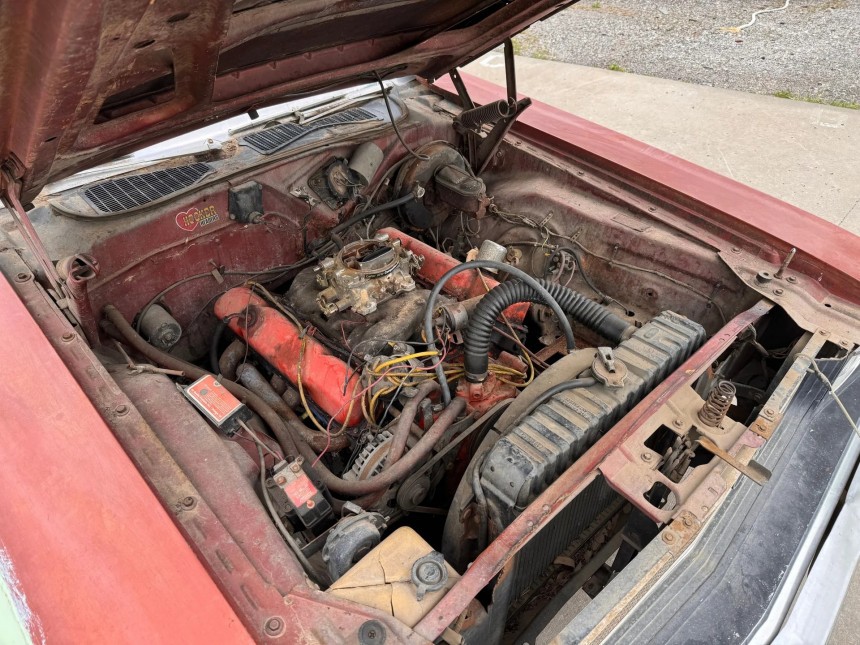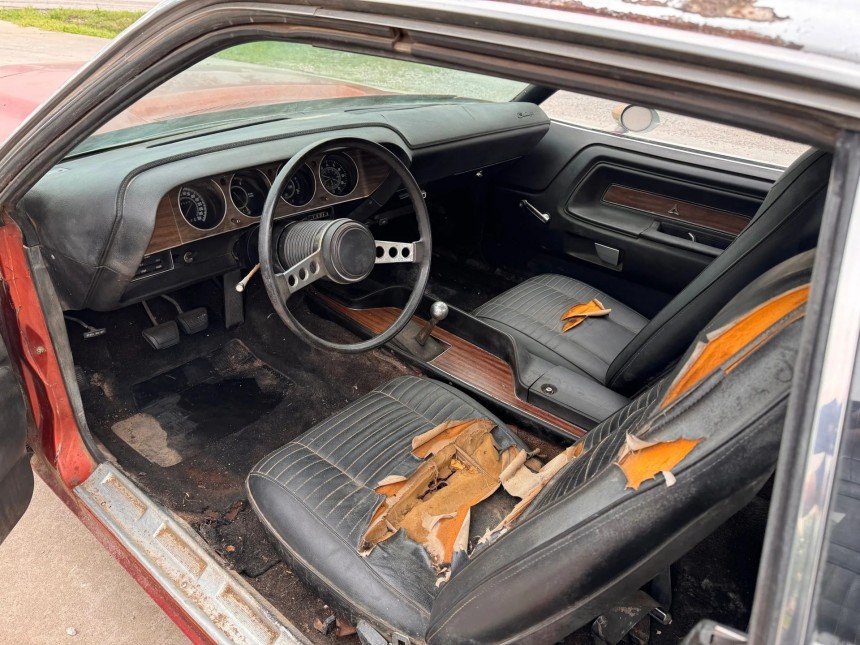Introduced on September 25, 1969, as a 1970 model year, the all-new E-body Dodge Challenger became an instant classic, leaping up to the first step of the podium right alongside its muscle car big Dodge brother, the Charger. Naturally, the newly introduced Mopar pony car covered the board in terms of engine options and performance. After all, the E-body platform had been devised for this specific purpose – to accommodate every single motor Chrysler Corporation offered for its automobiles in 1970.
The Charger and Coronet had established a rowdy reputation with the Road/Track packages, but the Challenger challenged the established tradition by adding another engine option to the R/T list. In 1967, the Coronet introduced the 440-4 Magnum as the standard engine, with the 426 Hemi as the sole alternative. In 1968, the Charger quietly followed suit, but 1970 brought about major changes.
First, the 440-cubic-inch (7.2-liter) big block received an upgrade in induction with a triple twin-barrel carb setup. The R/T models now had three engine choices, but the fresh-out-of-the-oven Challenger came along, slinging the 383 single four-barrel to the high-performance party. The 6.3-liter eight-cylinder motor was the smallest big-block motor available in the Mopar lineup at the time, and it was offered across the board in all Challenger models.
It was the standard powerplant for the R/Ts in 1970, and the interesting detail about it was that it came along with a three-speed manual transmission as factory-equipped unless stated otherwise by the customer. Indeed, buyers of a high-spirited but still affordable Challenger R/T went for the automatic three-speed TorqueFlite A727 gearbox. A smaller batch of cars was ordered with the four-speed smile-bringer manual.
Out of a total production effort of 77,000 units, 18,512 wore the Road/Track coat of arms. Nearly half of those (9,067) were hardtops powered by the ‘383-cu.in—4-bbl Magnum V-8’ (that was the official spelling in the Dodge literature). The four-speeds, however, were installed in 2,720 cars. For comparison, 6,347 Challenger R/T examples were ordered with the automatic and 355 with the three-speed, three-pedal tranny.
The 383 cubic-inch motor didn’t mean Dodge was cutting performance costs and corners by making a slow R/T car. It wasn’t as fast as the other three in the go-fast stable (440-4, 440 Six-Pack, 426 Hemi). The three-speed gearbox was a marketing gimmick to lure customers by playing psychological tricks.
The ‘standard transmission duty’ was handed over to the three-speed setup to keep the car's base price down. Whoever wanted to pull all the performance out of the vehicle checked the other two gearbox options in the order form. It wasn’t something against the Challenger; Chrysler also made the 3-speed standard on Super Bees and Road Runners in 1970 (the two cars also came with a 383 as the standard engine).
The four-range box was roughly $195.00, while the self-shifting TorqueFlite was the money-intensive option at 227 dollars. It might not sound like much, but the price for a base Challenger R/T was 3,266 bucks. That’s $26,290.63 in May 2024 coinage – if we could buy one brand-new first-year Dodge Challenger R/T 383 by some miracle of science.
As a matter of fact, we still can – except for that tiny detail of the ‘brand-new’ attribute. The not-so-great news is the price but wait ‘till you look at it (in the gallery). One California car now resides in Allen, Texas, waiting to become someone’s life-long-awaited restoration project. There are some drawbacks, I should warn you – the vinyl top is no longer on the car (it probably left to look for the original engine). That’s Skeleton in closet Number Two – the vehicle now has a 1969-vintage 383 that allegedly turns freely.
The long-time Golden State residence means there is no rust devouring its corrosive way through the iron-alloy parts of the body. Still, a hypothetical restoration must deal with the multiple-tone paint/repaint jobs. The color scheme is the perfect reason for conflicting eyewitness reports for whatever situation. The car looks like some past owner sawed two Challengers apart and put them together half and half.
The driver’s side retains its original Dark Burn Orange hue, while the left half is what you see in the photos. One super-cool fact about this contradictory Mopar is the now-extinct vinyl top, originally a rare V1G Gator Grain. Since the car is not damaged, the major concern about a refreshing type of project would be sourcing a replacement vinyl top – while available, one sells for $1,200.
I don’t mean to divide the Mopar community here, but I suspect the Challenger put on the R/T garment without the intention of going for holiday cruises. However, one of the former owners of this muscle Dodge thought a luggage rack was just the thing to top off the 335 hp (340 PS) and 425 lb-ft (576 Nm) of torque lurking at the opposite end of the car.
A keen eye will quickly discover that one of the most vaunted features of the R/T-badged Mopars is missing – the Pistol Grip shifter handle is replaced by a very prosaic ball. Also, notice the trailer hitch protruding obtrusively from underneath the rear fender (yes, there was such a time in our history when one would put a high-performance automobile in front of a trailer).
The car came with no air conditioning, manual steering, front discs for the power brakes, a Rallye instruments cluster, and a woodgrain panel center console between the two black vinyl buckets upfront. It is for sale—it has been for some time, even getting past an online bid without getting a new owner. Perhaps the asking price of $34,500 is a bit too much, considering that last week, the most approachable bidder offered a grand under this value (obviously not meeting the reserve).
First, the 440-cubic-inch (7.2-liter) big block received an upgrade in induction with a triple twin-barrel carb setup. The R/T models now had three engine choices, but the fresh-out-of-the-oven Challenger came along, slinging the 383 single four-barrel to the high-performance party. The 6.3-liter eight-cylinder motor was the smallest big-block motor available in the Mopar lineup at the time, and it was offered across the board in all Challenger models.
It was the standard powerplant for the R/Ts in 1970, and the interesting detail about it was that it came along with a three-speed manual transmission as factory-equipped unless stated otherwise by the customer. Indeed, buyers of a high-spirited but still affordable Challenger R/T went for the automatic three-speed TorqueFlite A727 gearbox. A smaller batch of cars was ordered with the four-speed smile-bringer manual.
The 383 cubic-inch motor didn’t mean Dodge was cutting performance costs and corners by making a slow R/T car. It wasn’t as fast as the other three in the go-fast stable (440-4, 440 Six-Pack, 426 Hemi). The three-speed gearbox was a marketing gimmick to lure customers by playing psychological tricks.
The ‘standard transmission duty’ was handed over to the three-speed setup to keep the car's base price down. Whoever wanted to pull all the performance out of the vehicle checked the other two gearbox options in the order form. It wasn’t something against the Challenger; Chrysler also made the 3-speed standard on Super Bees and Road Runners in 1970 (the two cars also came with a 383 as the standard engine).
The four-range box was roughly $195.00, while the self-shifting TorqueFlite was the money-intensive option at 227 dollars. It might not sound like much, but the price for a base Challenger R/T was 3,266 bucks. That’s $26,290.63 in May 2024 coinage – if we could buy one brand-new first-year Dodge Challenger R/T 383 by some miracle of science.
The long-time Golden State residence means there is no rust devouring its corrosive way through the iron-alloy parts of the body. Still, a hypothetical restoration must deal with the multiple-tone paint/repaint jobs. The color scheme is the perfect reason for conflicting eyewitness reports for whatever situation. The car looks like some past owner sawed two Challengers apart and put them together half and half.
The driver’s side retains its original Dark Burn Orange hue, while the left half is what you see in the photos. One super-cool fact about this contradictory Mopar is the now-extinct vinyl top, originally a rare V1G Gator Grain. Since the car is not damaged, the major concern about a refreshing type of project would be sourcing a replacement vinyl top – while available, one sells for $1,200.
A keen eye will quickly discover that one of the most vaunted features of the R/T-badged Mopars is missing – the Pistol Grip shifter handle is replaced by a very prosaic ball. Also, notice the trailer hitch protruding obtrusively from underneath the rear fender (yes, there was such a time in our history when one would put a high-performance automobile in front of a trailer).
The car came with no air conditioning, manual steering, front discs for the power brakes, a Rallye instruments cluster, and a woodgrain panel center console between the two black vinyl buckets upfront. It is for sale—it has been for some time, even getting past an online bid without getting a new owner. Perhaps the asking price of $34,500 is a bit too much, considering that last week, the most approachable bidder offered a grand under this value (obviously not meeting the reserve).
